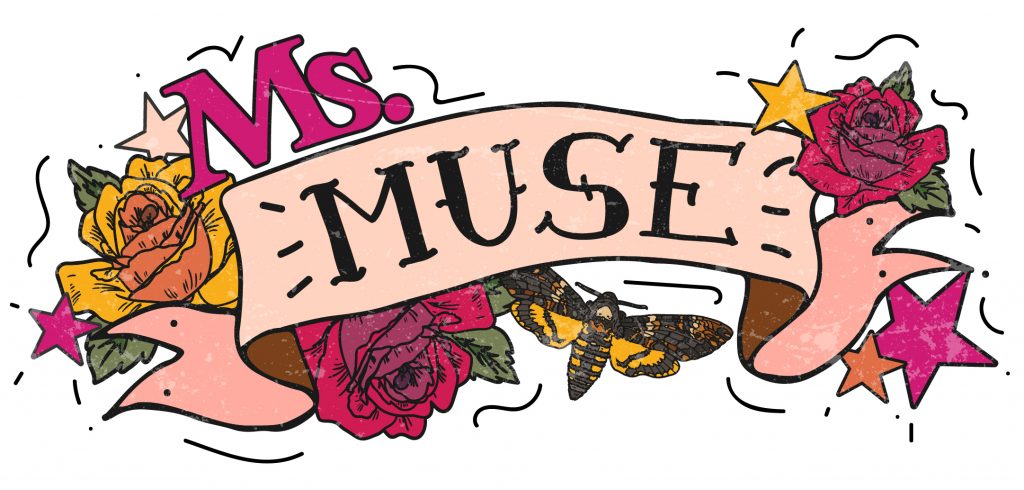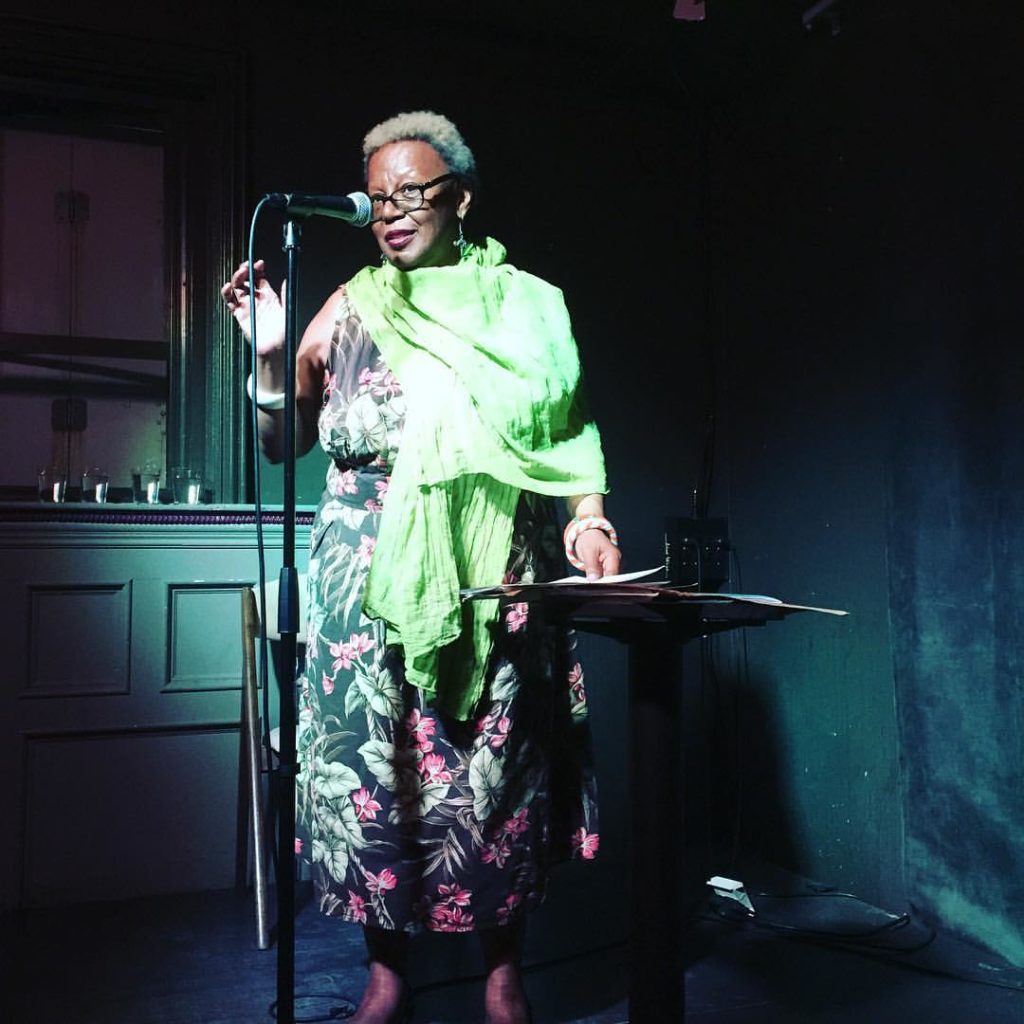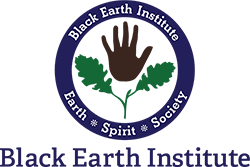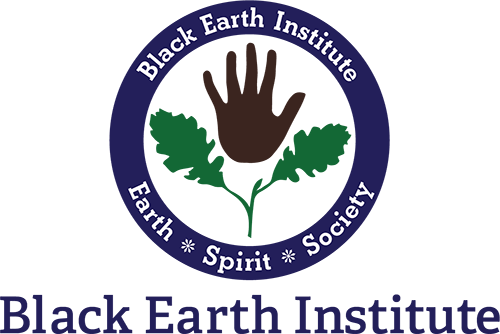
Click here for the original webpage. 3/28/2019 by CHIVAS SANDAGE
In the velvet of her voice—relaxed, Brooklyn-cool—audiences hear “the music of a southerner” with the “same deceptively casual tone” of the blues. Watching poet and playwright Patricia Spears Jones read her poem “Lave” as part of the Migration Series Poetry Suite at the Museum of Modern Art in 2015—immediately following United States Poet Laureates Rita Dove and Natasha Trethewey at the lectern—she seems as comfortable, intimate and down-to-earth as if reading to us in her kitchen.
Introducing herself simply as a “Writer/Educator/Friend” on her own website, Spears Jones was awarded the prestigious $50,000 Jackson Poetry Prize in 2017 for having “…steadily and quietly enriched the American poetic tradition with sophisticated and moving poems.”
Patricia Spears Jones was born and raised in Forrest City, Arkansas, from which hail several notable blues, jazz and soul musicians including Albert King and Al Green. After public schools were forced to integrate, Forrest City put an end to school-sponsored proms and other social events for several decades. Spears Jones left Forrest City and attended Rhodes College in nearby Memphis, Tennessee, finding her way to New York City in 1974, where she has lived for 45 years, the last 20 in Brooklyn.
Her poem “Seraphim” appeared in The New Yorker last year. Her most recent book, A Lucent Fire: New and Selected Poems (2015), features her 2017 Pushcart Prize winning poem, “Etta James at the Audubon Ballroom.” Other collections include Painkiller (2010), Femme du Monde (2006) and The Weather That Kills(1995). Widely anthologized, her work has appeared in Angles of Ascent: A Norton Anthology of Contemporary African American Poetry (2013) and Renga for Obama (2018), among others.
Mabou Mines commissioned and produced two of her plays. Spears Jones has won numerous grants, awards, fellowships and residencies and is a Senior Fellow for The Black Earth Institute. She earned an MFA in Writing from Vermont College of Fine Arts and has taught at Sarah Lawrence College, LaGuardia Community College, Hunter College, Adelphi University and Barnard College.
As an arts administrator, Spears Jones served as Director of Planning and Development of New York City’s New Museum of Contemporary Art and was the first African American Program Coordinator at the St. Mark’s Church Poetry Project. She teaches a “Living Women Poets” workshop for which she created “A Feminist Canon,” a reading list from 43 titles on her own bookshelves. The list is “not anywhere near complete” Spears Jones says, but it offers students a range of women poets and writers “other than the usual big names, although a couple are there,” to read and research.
For this installment of Ms. Muse, acclaimed poet Patricia Spears Jones opens up about growing up in the segregated South, the literary world’s ageism and Eve’s resistance—and shares three new poems.

THE POEMS
The myth of
What a declaration
Bring the snakes, snails, worms
That wake the soil
Tell the bees to gather nectar
And when done, offer the queen
All that work.
Thrive and then the humans
Mess up the works, what with their
Ignorance, their nakedness and God’s
Push away from Eden.
That is the myth—the man, the woman
The snake that offers the nectar of knowledge.
What has always made me smile is that Eve
Is curious. She wants to know. Adam is
Walking about unable to converse with the other
Beasts—he is dumb and fearful. He’s got this gig
And he does not want to lose it. He does not know
What to do with Eve. Smile. Touch her. Fuck.
What he knows is prohibition and obeisance
And he is very good at obeying and keeping
Things just so.
Eve is bored. She’s there
To prop up this guy who claims he birthed her.
She knows that is not the truth, but how to
Prove it. How to show Adam his story is
Not his own. So the snake twirls around
The garden path and Eve observes the
Undulation. The tree has leaves a shade
Of green so dark with candor, she weeps.
The fruit is sweet. She knows the word
Sweet. Then Adam arrives calling
Her to stop.
But she is pleased with the fruit.
She wants satisfaction.
Adam wants to
Never change.
But here’s the path she fancied
And he’s on it with her—
a perfect definition of marriage.
Where I am from (pretty and harsh)
Crawdads and frogs populated the ditch
Dividing Southside recreation area and cotton
Fields beyond. Frogs’ music made for giggles
While crawdads squiggled when caught.
Fraught hands dropped them into buckets
Lucky find—dinner—boiled or fried.
If you had Louisiana relatives, then legs
Of frogs could become appetizer, but if not
The frogs remained intact.
Wild onions heralded spring and mustard greens
Were first bright yellow flowers. Crepe myrtle
Hydrangeas, day lilies and in more manicured yards
Roses. All are humbled by the magnolia: tall, regal
Huge white blossoms blaring a proud music like
The bullfrog loud enough to scare little kids.
That’s the pretty version. There has to be a pretty version.
Those trees held switches for backside beatings.
Those fields hosted predators, some human
Who found children to brutalize.
Public schools were separated by race
Black schools were shut down in the spring
Black schools were shut down in the fall
Black schools had talented teachers
Who taught away from the hand-me-down
Textbooks and improvised science projects,
Lab equipment was for White Students Only.
Where I am from gave me, gave us
Daily struggle for what is right
Where I am from taught the value of sunsets.
The alarm of wild onion scent and to never
Ever talk to White men in nice cars.
Where I am from
Said Colored get ready for a new day coming
Said Black music is the bull frog hollering
Said the huge fist of the magnolia can smack
Down the mighty, the mean-spirited the glory
Hallelujah lying White pastors, who grab money
Grope bodies and command their churches vote for bigots.
Where I am from
The Delta widens a deep soil’s munificent fertility
Soy rice cotton corn
Corn cotton rice soy
The Delta spread those crops once peopled with harvesters
Now patrolled by huge machines, robotic and expensive
Where I am from
The people who picked, who chopped
Who played and plotted now ride their SUVs
And count crosses or bullet holes—the crops continue
To feed the world
Leontyne Price sings Pace, pace, Dio mio
Peace, peace my God
Peace, peace my God—the piece that fell there
Here, the piece that falls and keeps falling
My God—we need peace, peace
The crows seek shelter
Perch there
Perch here
Perch up near the lamp light line
Sidewalks splattered with crow shit
It’s all hit and never miss—the crows laugh
Loudly. They caw and caw as in a cartoon.
Then swoop up again searching for
A line of wire strong enough to handle gossip
Perch here
Perch there
A noisy line of brassy birds
Ready to eat up all the leftovers—heck
The pigeons refuse this massive waste.
Species specialization or just the luck of the draw.
Claws when needed for the rescue or respite.
Peace, peace dear God
The Soprano sings her plea.
She wants calm, a serenity
Not the violent destiny that opera
Brings to all women—the dagger,
The strangled neck. Peace, peace
My God, why the dagger, the poison
The strangled neck—when did art
Become the home of murderers?
The crows know that humans are malicious
And wasteful. They calculate the many droppings
We dispose of: meat, bread, dead dead vegetables
They can taste what they want, but what sickens us
Sickens them.
Pace, pace Dio mio
Pace, pace, Dio mio
Peace, peace my God.

THE INTERVIEW
Can you tell me about your process of writing these poems?
Music is often a trigger for writing—Leontyne Price’s gorgeous voice singing challenging arias, and this aria is of a tortured woman crying for peace. I rarely use extended metaphors—but the crow seemed apt both because crows are ubiquitous and often part of racialized iconography. The poem is about violence, how it is ubiquitous and how art examines or exacerbates that violence, especially against women. Also, that cry for peace feels like the cry we are making now.
“The myth of” is a kind of joke—with Eve making that joke and a sly commentary on the patriarchy and marriage. There are many poems about Adam, Eve, the Tree, that snake—I decided to add to the pile.
“Where I am from” is a riff off of Willie Perdomo’s wonderful poem of the same name. I taught it at Hunter College and when I teach workshops I often give myself the same assignment. It went through a few iterations, but I am from Arkansas and there is great beauty in that place and plenty of horror—I think the poem shows many facets of growing up in the South.
Born in Forrest City, Arkansas, you were probably around six and just starting school when Governor Orval Faubus ordered the Arkansas National Guard to “preserve the peace” at Little Rock’s Central High School—which meant to resist integration by preventing nine Black students, the Little Rock Nine, from entering the school.
You were just a small child and Little Rock is about 93 miles from Forrest City. Did you hear adults talking about the integration crisis? If so, how did it affect you and your education?
Not really. I am sure all of the Black folks loved Eisenhower for making the National Guard protect the Little Rock Nine. But young children in Arkansas in the 1950s were rarely privy to adult conversation. I lived in a small Delta town where segregation was enforced by statute and custom, but there are always cracks in the customs—so my mother sent my brother and me to the Episcopal Mission School which was good for me, but not so much for my brother. On occasion, priests would visit, and most of them were White.
There was a White Episcopal Church in which Black parishioners were not encouraged to attend—don’t you love my feint here. Most of us knew who the fathers of light-skinned cousins and friends were. There were many cross-racial relationships, but the hierarchy in the town was White.
When desegregation came to my class, my mother let me go to Forrest City High School and my brother stayed at Lincoln Senior High School—he was in the band and had a great music teacher. I went to the “White school” because I knew there were better facilities—the library, etc.—and I made sure I was on the college-bound track. They tried to put all the Black students on the non-college bound track.
Sanderia Faye’s novel, Mourner’s Bench, really captures the complications of the 1960s and how desegregation was seen from a variety of vantages. Rural Arkansas is a place unto itself. There’s great threat and yet, great beauty.
Do you seek out poetry by women and nonbinary writers? If so, since when and why? More specifically, how has the work of feminist poets mattered in your childhood and/or your life as an adult?
I read poetry by women, men, from all races, ethnicities and sexualities. I don’t like the term non-binary by the way—I don’t think any gender is one or the other, although I do understand why it’s currently being used. But I do think that this is an extraordinary time for contemporary women poets. There are new narratives, new ways language is explored or imploded, graphic experimentation, you name it in the work: Fanny Howe, Julie Patton, Brenda Hillman, the late Monica Hand, the late Meena Alexander, the late Akilah Oliver, along with Marilyn Chin, Tina Barr, Maureen Owen, Angela Jackson, Erica Hunt, Analicia Sotelo, Ada Limon, giovanni singleton, Anne Waldman, Cheryl Boyce Taylor and r.erica doyle, all make work that shakes the mind and heart.
Each of these women and many more nurture my sense of what can be done with words. Given my age, the idea of a feminist poet in my childhood makes little sense. But feminist poets offer that nurture, the necessary fuel that gets us to deepen the integrity of language.
Feminist writers ask the pertinent questions about how we are to be in this world and what we can make of a future that transcends what, for too many, are the givens. Feminist poets forefront environmentalism, anti-violence work, social justice work and new definitions of beauty. I love that Anne Waldman calls her work (and you can say this of many of these writers) “trickster feminism.” Women writers disrupt patriarchal notions of family, sexuality, erotic desire and even economics—I’m thinking here of Susan Briante and Julie Sheehan. If the idea of the human is to be truly re-made, then women will do the making.
What groundbreaking (or ancient) works, forms, ideas and issues in poetry today interest and concern you?
I am simply interested in work that tells me something I do not already know. There are no particular forms that enthrall me, it is only how they are used. I will say that Angela Jackson and Tara Betts are two Chicago based poets from different generations whose work is blues-based (Angela Jackson) and hip-hop (Tara Betts), yet they explore similar dynamics. The intelligence and energy in their work—old-school and new—expresses the underlying power of American language, Black side.
I deeply enjoy the aphoristic strain from say Rae Armantrout and I love both reading and hearing Latasha N. Diggs. Also, I am more interested in arts—that is the plastic arts, music, cinema and architecture. So watching a serious or witty film, or seeing art exhibitions allows me to think about how to connect language to those experiences.
As a woman, and as a woman who writes, what do you need to support your work? What opportunities, support, policies and actions can or could make a direct difference for you—and for other women writers you know?
Writers, other than a small cohort, are poorly paid, particularly in the wake of the Internet, and poets even less so. For all of the glittering prizes which again go to a small cohort, there is no serious and consistent valuation of writers’ work.
Could it be there is too much supply for the limited demand? Could it be that too often writers forgo actual compensation for a stay in a nice hotel and some media coverage to get their “brand” out? I just know that the competition for what few dollars there are is acute and I don’t see that abating. What I do see is something that is very troubling—the sorting out of very young writers with grants and prizes and their “branding.” That leaves a great many poets and writers over 40 with an even tougher row to hoe.
I do wish there were more second or third book prizes, especially for poetry and more support for the distribution of poetry publications. I wish that instead of offering new prizes for individual writers, that literary patronage supported organizations both established and emerging, particularly ones that assist writers of color. The Mellon grant to the poetry consortium led by the Academy of American Poets is a good example, but it would be good to have seed grant money for emerging organizations, presses and projects. I have been organizing the American Poets Congress basically on my own dime.
As for me, I would like to be well-compensated for my time as a reader/presenter and a workshop leader. I’ve turned down programs because, for some reason, the venue can get me there and possibly house me, but can’t pay me an honorarium. No musician, no dancer, no professional actor would accept that—why should a poet? Too often poets in collegiate positions do perform without honoraria because they are salaried, but independent writers do not have that cushion. The two-tiered system is detrimental to all of us.
My dream position is to be a poet in residence in a college or university, where I basically write, support multi-disciplinary projects and research with literature as the base. I’d use the library and all those resources—oh, and have my own office. I’d do that for $50-75K per annum, depending on where it is.
But really and truly, the greatest obstacle to writers is the lack of value placed on our work—everybody wants content, but they don’t want to pay for it.
What is the American Poets Congress?
The American Poets Congress has grown from a small gathering of poets involved not only in writing and publishing, but also in community organizing, electoral politics and cultural production, whom I called after the disastrous 2016 presidential election. We are a group of poets and artists committed to the ideas of inclusion and in support of gender, racial, social and economic justice. To that end, we are deeply interested in how the language we make as poets can reclaim or shape as well as critique our cultural identity. We are planning a range of events and a national gathering to advance poets’ creative work in this politically volatile time.
How has the current political climate in the U.S. affected you as a woman and as a writer?
The current political climate, you know, it is the “same old, same old” with social media in the midst. It certainly spurred my organizing work, and if all goes well, there will be An American Poets Congress next year.
It has also given me the skills to engage a range of political commentary from the left to the right—I am pretty much Center Left. What is tiresome to me is the easy piling on of anything. I really think everyone should give themselves a day of radio silence in which no matter what horrors are taking place, they simply say nothing because there will be a horror the next day.
Even God rested. I am learning how to act like God and just not participate unless I really have something to say, to make, to push for. Justice and liberty are for the long haul not the short take.
These times make us look deeply at the language we use in our work, but it also forces us to see how, and if, that language is effective. Sometimes it is. For example, #BlackLivesMatter, which was coined by two young Black women, is effective.
What’s next? What upcoming plans and projects excite you?
I am working on putting together a poetry manuscript—first since A Lucent Fire—and continuing work on a memoir. I hope to complete both by year’s end and I hope to do more collaborations with musicians.
Last year’s work with Jason Hwang for the Vision Festival and a later work with Luke Stewart has whetted my appetite to do more with musicians and composers.
I love to collaborate. I know that Lisa Gutkin wants to revisit the musical setting for the poems that made up “Song for New York.” It would be thrilling to rework “The Brooklyn Song.”

